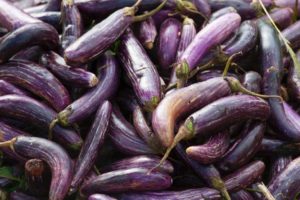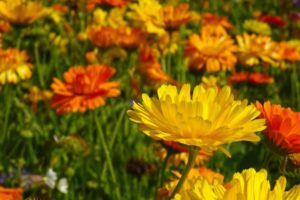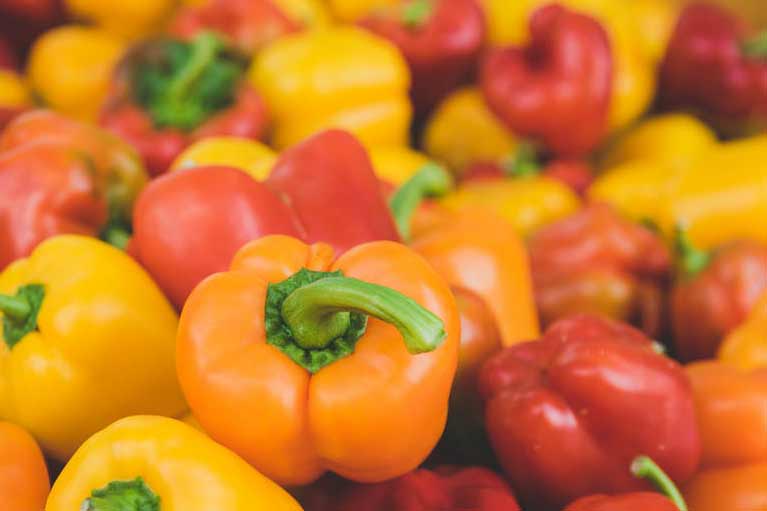Planting Peppers in your Garden
You might wonder how and why this vegetable shares a name with a common spice. When Christopher Columbus brought the plant back to Europe, it was so named due to the fact that anything with a hot, pungent taste was called pepper. The only pepper that does not produce the spicy capsaicin is the bell pepper. This mild pepper is actually considered a fruit by botanists, but is used as a vegetable for culinary applications. Bell peppers commonly come in green (unripe), yellow and orange (ripening), or red (fully ripe). The unripe green bells have a bitter taste which subsides into sweetness as it matures. In rare occasions, one may stumble upon white, brown, lavender, and dark purple peppers. These are usually seen as unripe.
Plant Peppers with these Great Vegetables, Herbs, and Flowers

Plant eggplant with peppers
————————-

Plant marigolds with peppers
————————-
Pepper Antagonists (do NOT plant Peppers with these)
So you’ve decided to plant peppers in your fantasitc garden, nice! According to our research on peppers, we don’t recommend planting broccoli, potatoes, and strawberries nearby.
Tips for Planting and Growing Peppers in your Garden
If you plan on cultivating this versatile vegetable, it is advisable to start your plant inside about 8 weeks before the final frost of the season. Those in warmer climates with longer growing seasons may choose to plant their peppers outdoors from the start, but this will affect the timing of when it will begin to bear fruit. Lightly cover your seeds with soil and water them. Expect to see a sprout within 2 weeks. Peppers need warmth to grow, so ambient air temperatures should be 80 degrees or more with generously warm soil. The plants will not begin growth under 55 degrees Fahrenheit. It is important to support the seedlings in the initial stages, and ensure they receive a lot of light. Once you’ve transplanted your peppers, be sure to fertilize the soil. Too much nitrogen fertilizer, however, will prevent your plants from bearing fruit.
When it comes time for harvest, choose what level of ripeness you’d like. It is easy to determine by using the previously mentioned color-guide. After you’ve selected and enjoyed your bell peppers, the seeds can be used for your crop the following season.
You can check out the Green Pinky for a guide to growing peppers as well.
Where to Buy the Best Pepper Seeds
| Website | Overview | Current Coupons | Learn More |
|---|---|---|---|
Selection: Large | Code: None | SHOP ----> | |
Selection: Large Pricing: Low Shipping: Cheap/free | Code: TODAY10OFF 10% off all orders | Reviews SHOP ----> | |
Selection: Large | Code: BURPEE5 $5 Off Your Purchase of $25Code: 10BURPEE $10 Off Your Purchase of $50 | Reviews SHOP ----> | |
Selection: Large | Code: WELCOMEBACK 10% off all orders | Reviews SHOP ----> |





